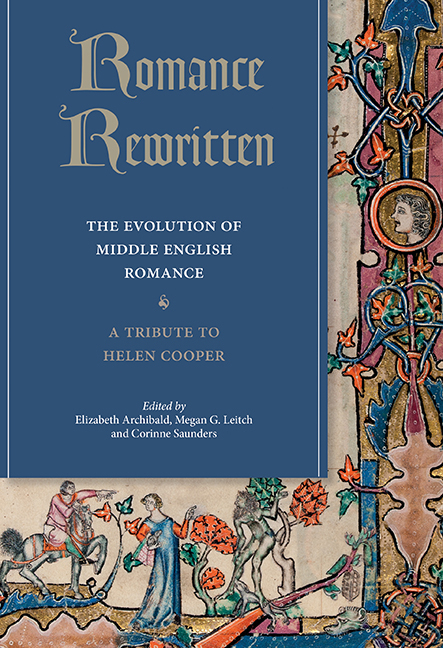Book contents
Introduction. Middle English Romance: The Motifs and the Critics
Published online by Cambridge University Press: 17 October 2019
Summary
Romance was a dominant genre in Western Europe from the twelfth century to the early sixteenth; its long-lived popularity depended upon reinvigoration as much as innovation, upon transformation as well as tradition. Middle English romances and their recognisable yet mutable motifs have attracted critical scrutiny since at least the fourteenth century, when Chaucer responded to the genre by writing of Sir Thopas, that ‘flour / Of roial chivalry’ with a face as white as bread, whose main achievement is to ride around and sleep in the woods until the Host interrupts Chaucer's ‘drasty rymyng’. It is customary to view Chaucer's Tale of Sir Thopas as a parody of romance – and more specifically of popular English romance – that also reveals Chaucer's debts to his insular forebears. As is well known, this ‘brilliant parody of everything that can go wrong’ in Middle English romance creates parodic effects through its vocabulary, jaunty tail-rhyme rhythm, and empty or burlesque redeployment of romance motifs. Romance motifs which Sir Thopas reduces to banalities include the quest for a fairy queen (in this case, probably non-existent) in which the knight encounters a monstrous opponent (from whom, in this rewriting, he bravely runs away). Certainly, when ‘His goode steede al he bistrood, / And forth upon his wey he glood’ as ‘a knyght auntrous’, Sir Thopas invokes the familiar expectations of the romance knight setting forth to seek adventure; but instead of proving his prowess, modern critics have often read the tale as suggesting the emptiness either of his goal, or of the genre.
To write of Middle English romances (parodic or otherwise) in these terms is to acknowledge not only a long history of value judgements of the genre, but also a long history of the study of conventions and motifs as central to understanding romance, whether in Erich Auerbach's foundational chapter ‘The Knight Sets Forth’ (1953), or in Helen Cooper's seminal The English Romance in Time: Transforming Motifs from Geoffrey of Monmouth to the Death of Shakespeare (2004). While Auerbach wrote primarily of French courtly romance, half a century later romance criticism had evolved and expanded to include the Middle English popular romances that critics had once dismissed or disparaged as Sir Thopas seems to do.
- Type
- Chapter
- Information
- Romance RewrittenThe Evolution of Middle English Romance. A Tribute to Helen Cooper, pp. 1 - 24Publisher: Boydell & BrewerPrint publication year: 2018



